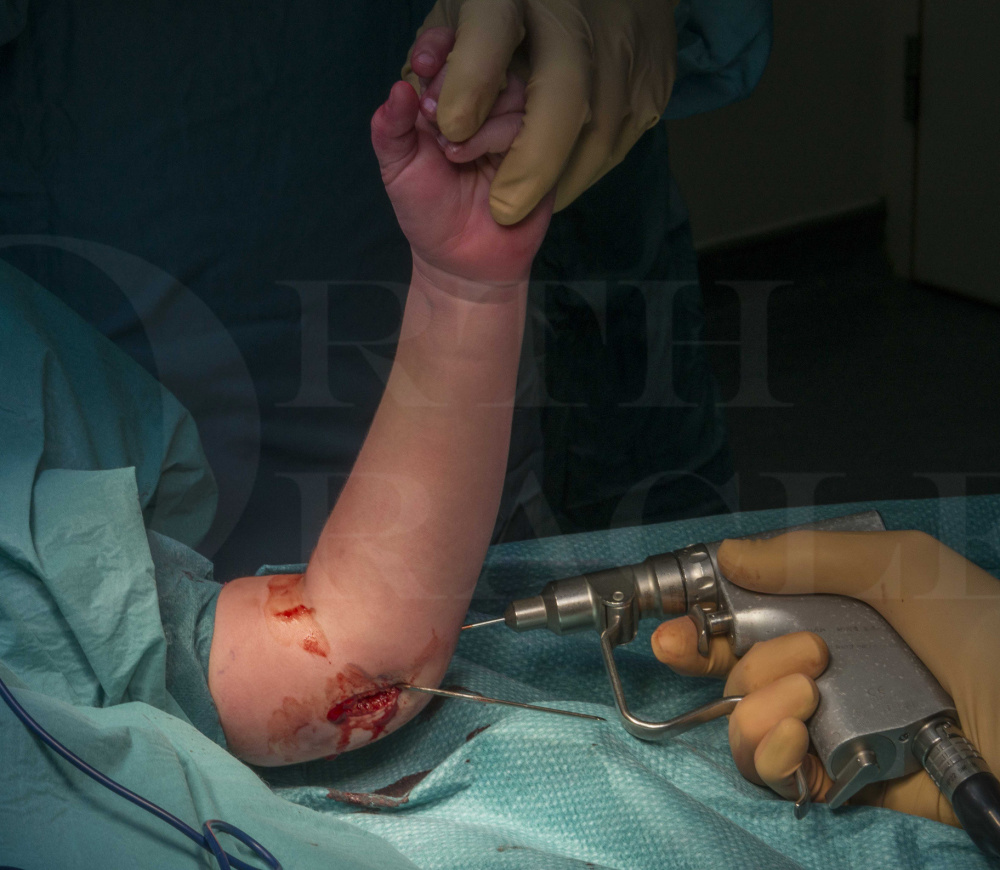Humeral fracture: K-wiring of Supracondylar flexion pattern fracture
Overview

Subscribe to get full access to this operation and the extensive Shoulder & Elbow Surgery Atlas.
Learn the Humeral fracture: K-wiring of Supracondylar flexion pattern fracture surgical technique with step by step instructions on OrthOracle. Our e-learning platform contains high resolution images and a certified CME of the Humeral fracture: K-wiring of Supracondylar flexion pattern fracture surgical procedure.
Supracondylar fracture of the distal humerus is the commonest elbow injury in children. Extension fractures with posterior displacement of the distal fragment are the most frequent. Flexion injuries with anterior displacement of the distal fragment account for approximately 2-3% of all supracondylar fractures. They are generally the result of falls onto the olecranon process (extension injuries occur secondary to fall onto outstretched hand). It is important not to miss these injuries since management is often different to the more common extension variety. Flexion type injuries typically occur in slightly older children (5-8 years compared to 2-4 years).
Injuries to the brachial artery and median and radial nerves are much more common in extension in extension supracondylar fractures (neurovascular structures are anterior and therefore stretched as the fracture extends) than the flexion type. The commonest nerve injury in flexion type injuries is the ulnar nerve, occurring in 10-20% of cases.
Closed reduction and percutaneous K wire stabilisation should be attempted as the ideal treatment. However, achieving and maintaining adequate reduction of the fracture by closed means is difficult and open reduction is required much more frequently than for extension type injuries.
Outcomes are good providing adequate reduction can be achieved. Non union and long term stiffness are very rare.
Readers will also find of interest the following OrthOracle techniques:
Open Reduction and Internal fixation of proximal humeral physeal fracture using Synthes Philos plate
Internal Fixation of Olecranon fracture using Synthes LCP Olecranon plate
Suture tension-band fixation of olecranon fracture using Arthrex Fibretape sutures
Author: Christopher Edward Bache FRCS (Tr & Orth)
Institution: The Royal Orthopaedic Hospital and Birmingham Childrens Hospital, Birmingham, UK.
Clinicians should seek clarification on whether any implant demonstrated is licensed for use in their own country.
In the USA contact: fda.gov
In the UK contact: gov.uk
In the EU contact: ema.europa.eu



















